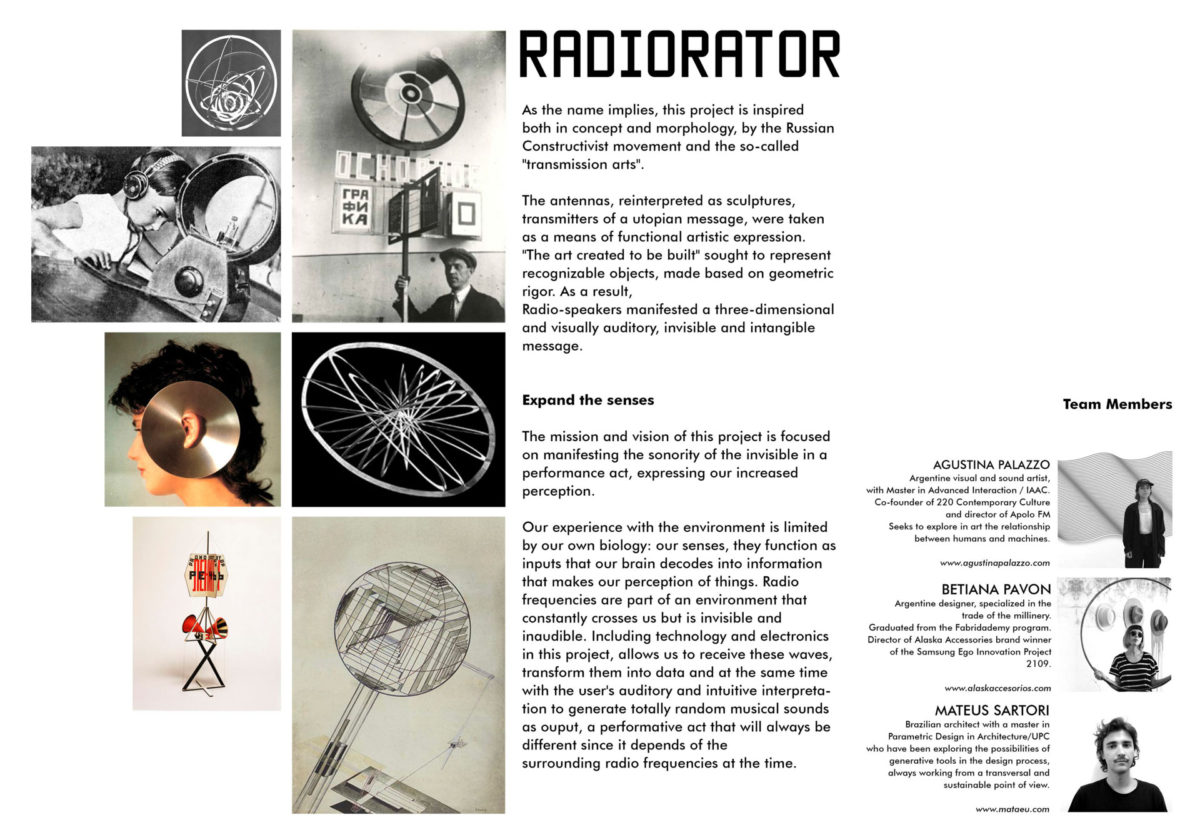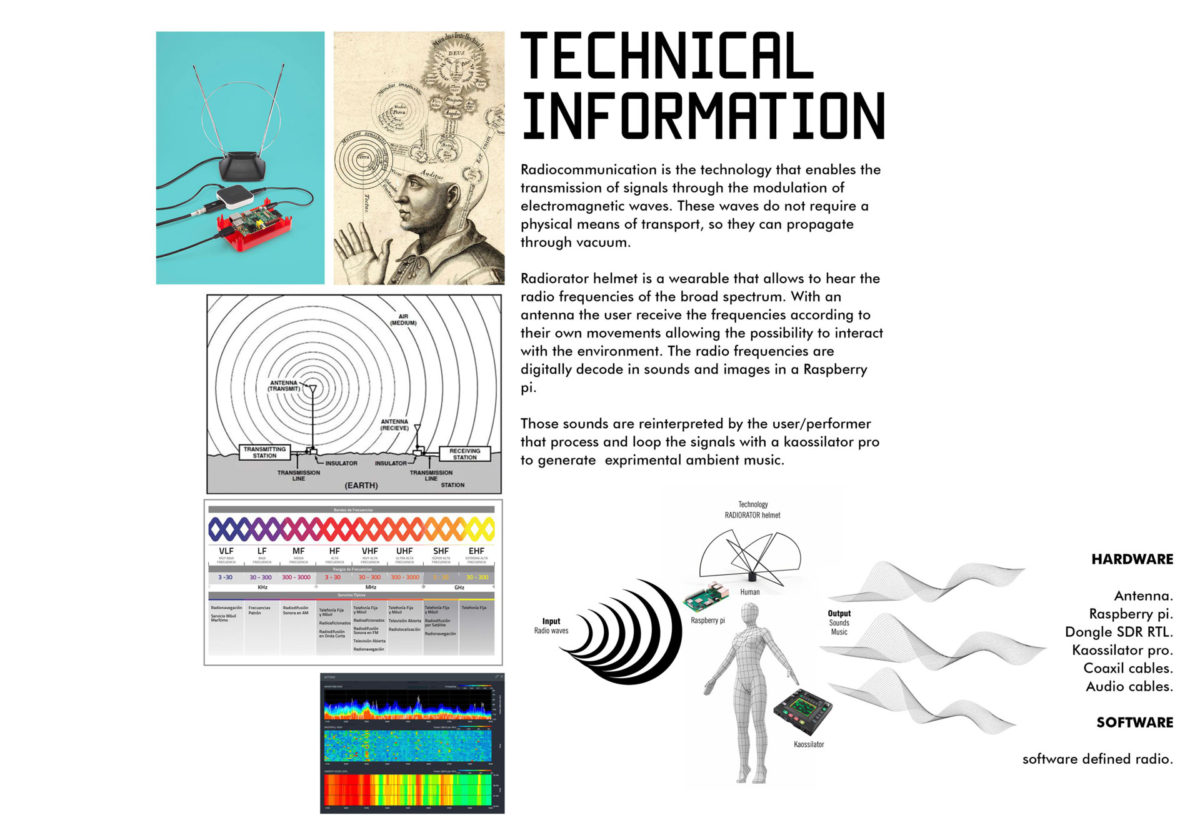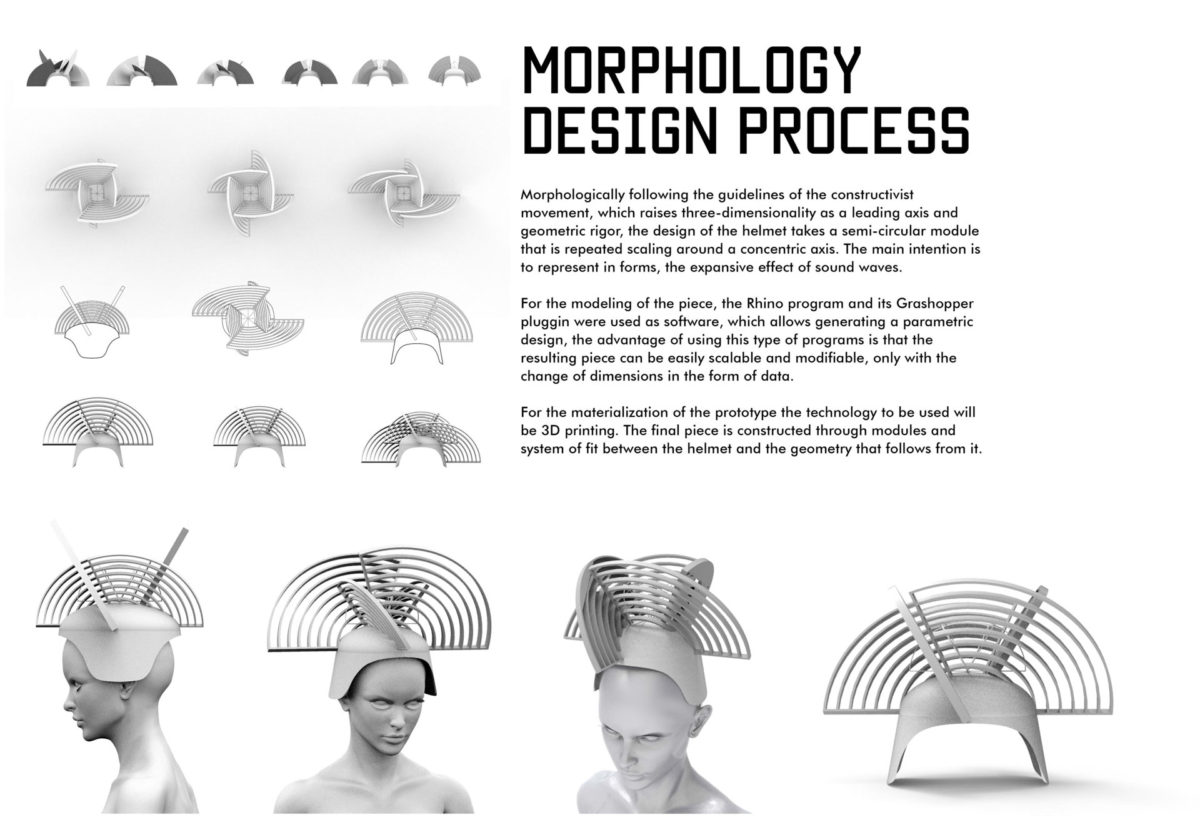RESHAPE19 | Cognified matter
Wearable Technology category
Radiorator

INTRODUCTION
As the name implies, this project is inspired both in concept and morphology, by the Russian Constructivist movement and the so-called “transmission arts”.The antennas, reinterpreted as sculptures, transmitters of a utopian message, were taken as a means of functional artistic expression. “The art created to be built”; sought to represent recognizable objects, made based on geometric rigor. As a result, Radio-speakers manifested a three-dimensional and visually auditory, invisible and intangible message.Expand the sensesThe mission and vision of this project is focused on manifesting the sonority of the invisible in a performance act, expressing our increased perception.Our experience with the environment is limited by our own biology: our senses, they function as inputs that our brain decodes into information that makes our perception of things. Radio frequencies are part of an environment that constantly crosses us but is invisible and inaudible. Including technology and electronics in this project, allows us to receive these waves, transform them into data and at the same time with the user’s auditory and intuitive interpretation to generate totally random musical sounds as ouput, a performative act that will always be different since itdepends of the surrounding radio frequencies at the time.
MORPHOLOGY DESIGN PROCESS
Morphologically following the guidelines of the constructivist movement, which raises three-dimensionality as a leading axis and geometric rigor, the design of the helmet takes a semi-circular module that is repeated scaling around a concentric axis. The main intention is to represent in forms, the expansive effect of sound waves.For the modeling of the piece, the Rhino program and its Grashopper pluggin were used as software, which allows generating a parametric design, the advantage of using this type of programs is that the resulting piece can be easily scalable and modifiable, only with the change of dimensions in the form of data.For the materialization of the prototype the technology to be used will be 3D printing. The final piece is constructed through modules and system of fit between the helmet and the geometry that follows from it.
Estimated Budget
Manufacturing 350 €
Electronic development 400 €
Materials & miscellaneous 250 €
TOTAL 1000

The research of the project aims to provide a solution of design and fabrication for the industry and offer an alternative material for textile. The current fashion industry is usually subjected to environmental and economic crises. The problems include pollution (from dying and producing fabric) and waste (from fast fashion), the difficulty of finding local workers work in the traditional garment factories, and an enormous amount of carbon footprint generated from outsourcing to cheaper resources and labor for mass production. By comparison, this project utilizes food waste and materials derived from plants, and it also included the recipe of bioplastic. It is a proposal of eco-friendly alternative material for the industry, turning the low-cost leftover material into economic values. For example, gelatin is derived from collagen taken from animal body parts, and it’s made primarily from the leftover of meat industries; Sobitol is from potato starch and widely used in the cosmetic industry. The mixture of the organic material is flexible, easy to dye with food coloring and plants, castable, and fast cure (20 mins for demold) for producing a large piece of fabric. Combining with the methodology of digital design and fabricating, the innovative and environmentally friendly production can attract young professionals, researchers, and artists to collaborate and rejoin the fabricating process, giving fresh energy to the traditional industry. In this aspect, it can solve the issues of “racing to the bottom”: the companies are forced to outsource to cheaper labor and resources. In this way, the industry can invest in the local economy, increase the value of human capital, and transform the future development.
The goal of the project also aims to encourage more research into local materials by investigating local plants, the culture of food, and traditional practices of crafting, so researchers can incorporate biopolymer and cellulose that are in the local environment into research topics. The sustainable economy can happen when the local knowledge can be recognized and developed into the product that reflects the heritage in their society.


